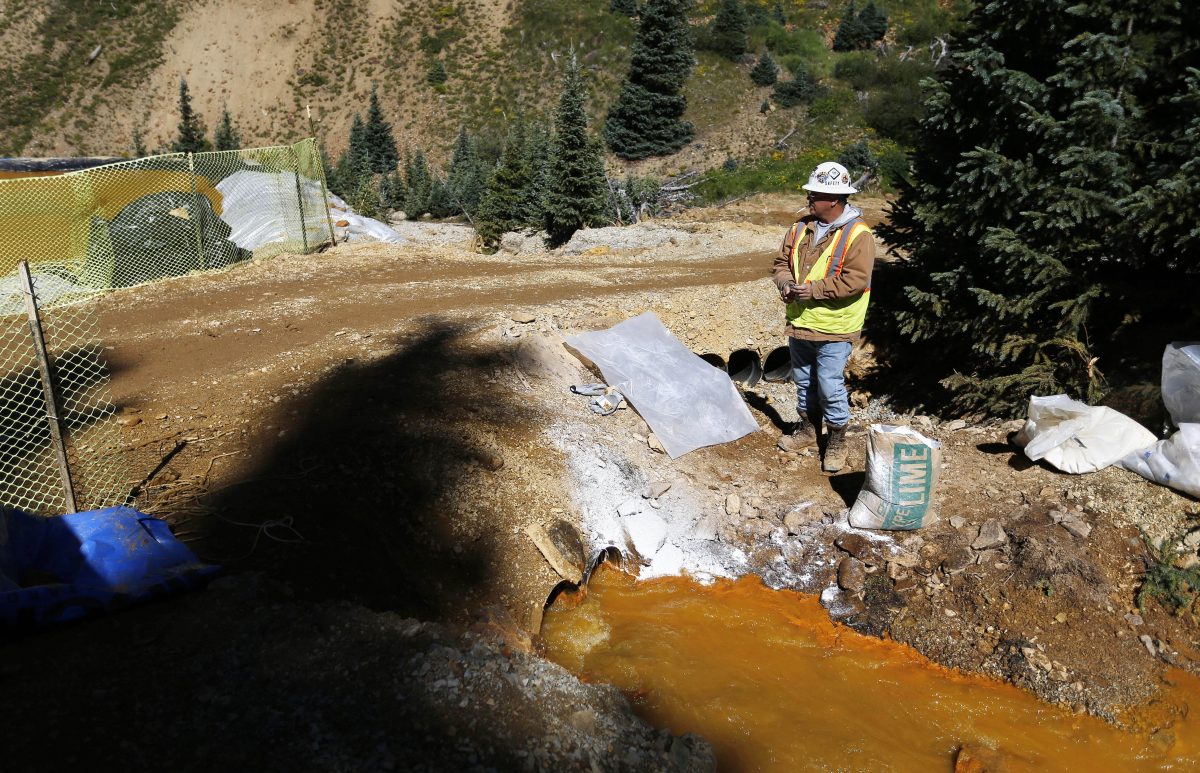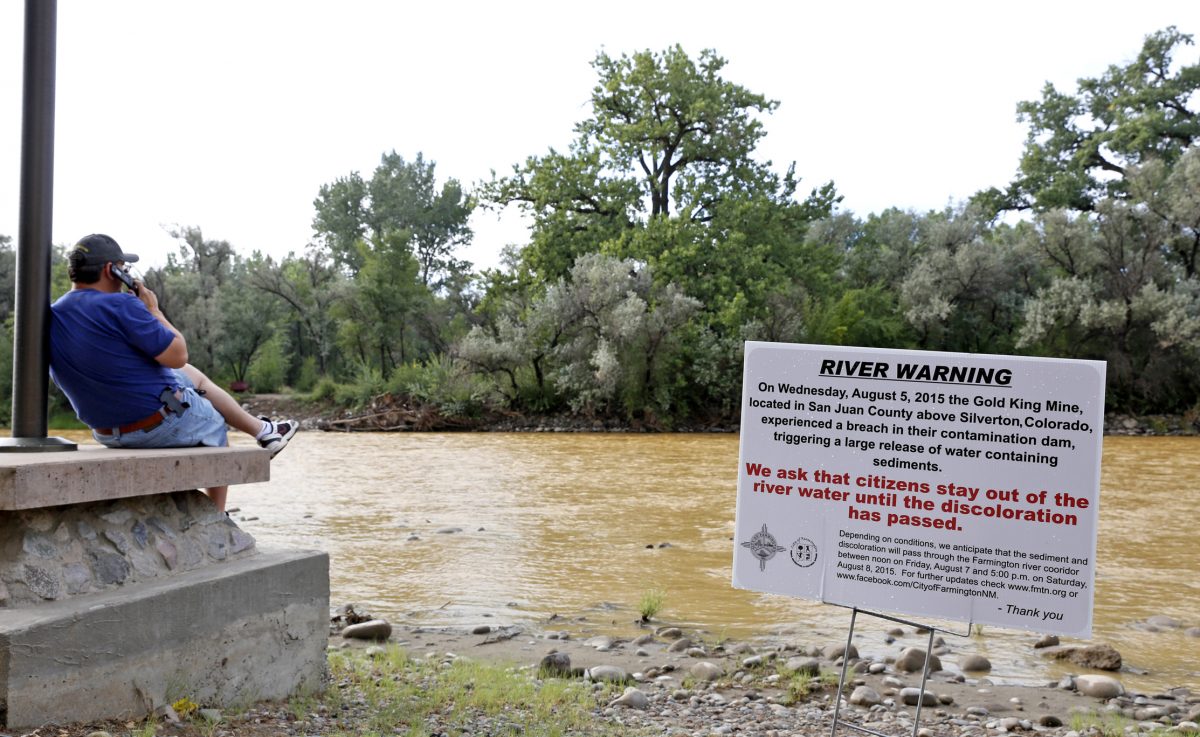


Defunct oil/gas wells and abandoned mines have long been lore-of-the-ore backstories in literally and figuratively shaping much of the landscape across the United States but, until recently, there was no comprehensive plan to plug these often hazardous sites.
In fact, listing oil/gas wells and mines without liable owners was arduous because many pre-date environmental regulations, have no records, or are locked in court proceedings that can last years and usually end up in bankruptcies.
Without liable owners to bill, local and state governments paid to plug “orphan” wells to prevent them from leaking toxic substances into the water and air. Few were eager to catalogue a deficiency rooted in cost-aversion, so numbers have been underestimated.
But that has changed. With money on the table, suddenly, heretofore uncounted orphan wells are being counted coast-to-coast.
The Bipartisan Infrastructure Law (BIL), adopted by Congress in November 2021, authorizes $4.7 billion to plug abandoned wells, prompting states to update databases to apply for grants.
In 2022, states reported more than 120,000 abandoned wells, a nearly 50-percent increase from the 81,000 reported in 2021 (pdf) to the U.S. Department of Interior (DOI).
Ohio, which received $25 million in remediation grants, in 2022 reported the highest number of orphan wells of any state—20,439—after reporting just 891 in 2021.
In January 2022, DOI announced states could apply for $1.15 billion in grants based on three criteria: the number of orphan wells in each state; estimated cost of cleaning up those wells; job losses in each state between March 2020 and November 2021.
The third component is fostered by the REGROW Act, built on a North Dakota program to put displaced energy workers to work plugging orphaned wells, which was incorporated into the BIL.
In August 2022, 24 states received another $560 million to begin plugging more than 10,000 orphaned wells. Twenty-two states received $25 million each, while Arkansas and Mississippi got $5 million apiece.
These figures are still far below what actually lies below, and the $4.7 billion allocated to deal with it is, literally, a drop in the bucket, most concede.
The U.S. Environmental Protection Agency (EPA) estimates there are 2.1 million unplugged abandoned wells nationwide. Other estimates, such as by Carbon Tracker, top 2.6 million.
DOI’s Bureau of Land Management (BLM) Abandoned Mine Lands program lists 57,586 “known abandoned mines” on federal lands with at least 80 percent warranting investigation, but those numbers haven’t been updated since 2017.
The National Park Service reports about 2,000 unplugged wells on its lands. In January, it was using BIL money to begin plugging 10 wells in Jean Lafitte National Park in southern Louisiana.
An Ohio River Valley Institute April 2021 report estimates there were 538,000 unplugged abandoned oil/gas wells in Kentucky, Ohio, Pennsylvania, and West Virginia. There could be hundreds of thousands more in the region, it said.
“Oklahoma is home to over 17,800 documented abandoned gas and oil wells,” Sen. Markwayne Mullin (R-Okla.) said. “If left unplugged, abandoned wells can leak methane, contaminate groundwater, and damage land cultivation at a significant cost to landowners.”
Using 2020 Census data, the Environmental Defense Fund (EDF) in 2021 estimated about 9 million people live within a mile of an orphan mine. With the boom in previously unreported unplugged wells being reported, it raised that estimate to 14 million in 2022.
And as the numbers of reported orphan oil/gas wells mount, so does the projected collective remediation price tag with some estimates exceeding $280 billion.
Mullin is among four co-sponsors of the proposed Abandoned Well Remediation Research & Development Act, which would supplement the $4.7 billion BIL program to ensure “funds are dedicated to thoroughly-researched efforts that maximize benefits for affected communities and the energy sector.”
“Our bill will provide the resources needed to improve methods for identifying, repurposing, and remediating these wells, thereby cutting costs for landowners and eliminating the potential for environmental hazards,” Mullin said in a statement accompanying the bill.
“There are more than 2 million abandoned oil and gas wells across America that pose tremendous health, safety, and environmental risks to the surrounding communities,” agreed co-sponsor Sen. Ben Ray Luján (D-N.M.).
The New Mexico Energy, Minerals & Natural Resources Department received $25 million from BIL and has plugged 23 abandoned wells since September, it reports, removing “carbon emissions equal to 2.85 million miles per year by a gasoline-driven vehicle.”
Among commonly cited issues in maintaining a chain of liability is low bonding requirements in many states. In the four upper Ohio Valley states, Kentucky, Ohio, Pennsylvania, and West Virginia, for instance, bonds cover just 7.6 percent of the average remediation cost.
Remediation costs can vary widely by size, geology, depth of the well, surrounding terrain, and state regulations. The cost to plug wells in the Upper Ohio Valley can range from $6,500 to at least $87,500.
The cost to plug all abandoned wells in the region could top $34 billion, the Ohio River Valley Institute estimates, but it could also generate and sustain 15,151 jobs for more than 20 years.
A 2022 proposed bill, the “Good Samaritan Remediation of Abandoned Hardrock Mines Act,” introduced by Sens. Martin Heinrich (D-N.M.) and Jim Risch (R-Idaho) with 18 cosponsors, addresses remediation for thousands of “abandoned legacy mines” that has been frozen in liability limbo.
Because current law potentially exposes mining companies to new liability if they engage in remediation projects, they are discouraged from volunteering equipment, resources, and expertise to restore abandoned mines. Nonprofits and other “Good Samaritan” groups also hesitate to get involved because of liability concerns.
There are more than 140,000 abandoned hardrock mines in the United States, of which 22,500 pose environmental hazards, according to the Government Accountability Office (GAO).
“Unfortunately,” the bill reads, “liability rules would leave these ‘Good Samaritans’ legally responsible for all the pre-existing pollution from a mine, even though they had no involvement with the mine prior to cleaning it up.”
Congressional lawmakers have attempted to work around the liability issue for more than a dozen years with the 2022 bill the latest effort in clarifying that “Good Samaritan” efforts in mine remediation should not incur liability. Proponents want to see it advance in 2023.
National Mining Association Executive Vice President and Chief Operating Officer Katie Sweeney told the House Energy & Commerce to pass bipartisan the “Good Samaritan” legislation, which has been vetted and endorsed by a wide range of advocacy groups, such as Trout Unlimited.
“This would not only allow the processing of tailings and other mine waste from historic mining operations long since abandoned and with no current liable owner, but also provide the added benefit of cleanup and remediation activities that if left alone, will continue to degrade the water quality conditions and pose ongoing safety risks to surrounding habitat and neighboring communities,” Sweeney said.


